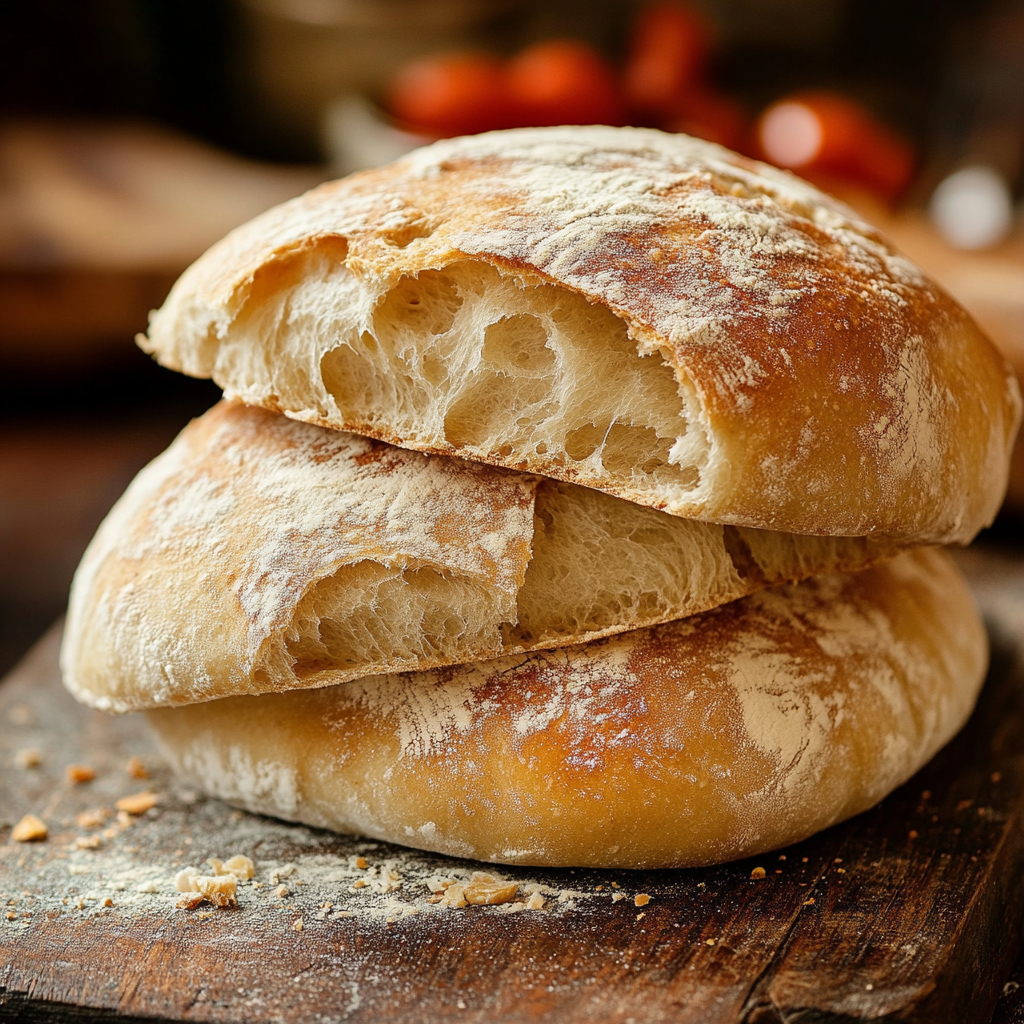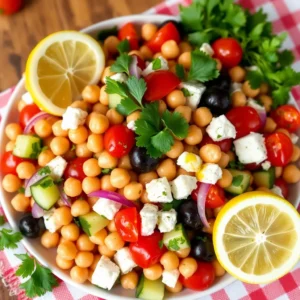There’s something magical about pulling a perfectly crusty loaf of homemade sourdough bread from your oven. That first crack as you slice into golden perfection, revealing those beautiful air pockets inside – it’s a small victory that brings joy to even the most chaotic day. I’m Alexandre from foodytasty.com, and I’m here to let you in on a little secret: making incredible sourdough bread at home isn’t just for professional bakers or Instagram influencers. It’s for you – yes, even if you’re juggling work deadlines, soccer practice pickups, and a mountain of laundry.
I remember my first attempt at homemade sourdough bread. Let’s just say it was… memorable. Less “artisan loaf” and more “could possibly be used as a doorstop.” But that’s what makes this journey so rewarding – with each loaf, you learn something new, and before you know it, you’re the neighborhood bread wizard everyone turns to for advice.
Why You’ll Love This Homemade Sourdough Bread
Unlike store-bought bread with its mysterious ingredient list, homemade sourdough bread is beautifully simple. Flour, water, salt – that’s essentially it! The magic happens through fermentation, where wild yeast and friendly bacteria create that distinctive tangy flavor we all crave.
But the benefits go beyond taste. Many people find sourdough easier to digest than commercial bread. The long fermentation process breaks down gluten and phytic acid, potentially making it gentler on your tummy. Plus, there’s something deeply satisfying about mastering this ancient technique that connects you to thousands of years of baking tradition.
And let’s be honest – few things impress dinner guests more than casually mentioning, “Oh, this bread? I made it myself.” (Don’t worry, I won’t tell them how surprisingly easy it actually is!)
Understanding Your Sourdough Starter: The Heart of Great Bread
Think of your sourdough starter as a pet – a very low-maintenance, flour-loving pet that gives back deliciously. Your starter is a living culture of wild yeast and lactic acid bacteria that will leaven your bread naturally.
Ingredients for Sourdough Starter:
- ½ cup all-purpose flour
- ½ cup filtered water (room temperature)
- 1 tablespoon sugar (optional, to kickstart fermentation)
Creating your starter takes patience, but minimal hands-on time. You’ll mix the ingredients in a clean glass jar, cover loosely to allow airflow, and let nature work its magic. After about a week of daily “feeding” (discarding half and adding fresh flour and water), you’ll have a bubbly, active starter ready for baking.
The wonderful thing? This starter can live for years – decades even! Many bakers name their starters (mine’s Ferdinand) and some sourdough cultures have been passed down through generations. Talk about a meaningful family heirloom!
Gathering Your Homemade Sourdough Bread Ingredients
Once your starter is bubbling happily, you’re ready to make bread. Here’s what you’ll need:
For the Dough:
- 1½ cups all-purpose flour
- ½ cup whole wheat flour (adds wonderful depth of flavor)
- 1 cup filtered water (room temperature)
- ½ cup active sourdough starter
- 1½ teaspoons salt
Optional Flavor Boosters:
- ¼ cup seeds (sunflower or pumpkin are fantastic)
- ¼ cup chopped olives or dried herbs like rosemary
- 2 tablespoons honey or maple syrup for subtle sweetness
I love how flexible this recipe is. The basic version creates a classic loaf with wonderful flavor, but adding mix-ins transforms it into something uniquely yours. My current obsession is adding a handful of chopped fresh rosemary and a sprinkle of sea salt on top – it pairs beautifully with dinner or transforms morning toast into something special.
Creating Your Homemade Sourdough Bread: A Step-by-Step Guide
1. Mix the Dough
In a large bowl, combine your flours and water, stirring until no dry spots remain. Cover with a clean kitchen towel and let rest for 30 minutes. This initial rest, called autolyse, allows the flour to fully hydrate and begins developing the gluten structure.
Next, add your bubbly starter and salt. Mix until everything comes together into a somewhat sticky dough. Don’t panic if it feels different from store-bought yeast dough – sourdough is typically wetter.
2. Develop the Gluten
Turn your dough onto a lightly floured surface and knead for 8-10 minutes. The dough should become smoother and more elastic, though still a bit tacky.
Here’s a time-saving tip for busy days: instead of traditional kneading, try the “stretch and fold” method. After mixing, let the dough rest for 30 minutes, then grab one side, stretch it up, and fold it over itself. Rotate the bowl and repeat on all four sides. Do this once an hour for 3-4 hours during the first rise. It’s less hands-on time and develops wonderful structure!
3. First Rise (Bulk Fermentation)
Place your dough in a lightly oiled bowl, cover, and let it rise at room temperature for 4-6 hours. In warmer kitchens, it might only need 4 hours; in cooler ones, up to 6.
How do you know when it’s ready? Look for a dough that’s roughly doubled in size with a few bubbles visible at the surface. It should feel puffy and alive.
For busy schedules, you can also do a slow rise in the refrigerator overnight. Mix your dough in the evening, refrigerate, and it’ll be ready to shape the next day – plus, the slower fermentation develops even more complex flavors!
4. Shape Your Loaf
This step creates tension in the dough’s surface, which helps it rise upward instead of outward during baking.
Gently turn your dough onto a lightly floured surface, being careful not to deflate all those lovely air bubbles you’ve developed. Press it down slightly to form a rough rectangle. Fold the corners toward the center, then roll the dough into a tight ball, using your hands to create tension across the surface.
Place the shaped dough seam-side up in a floured bowl lined with a clean kitchen towel (or a proper proofing basket if you have one). This supports your dough during its final rise.
5. Final Rise
Cover your shaped dough and let it rise again for 1-2 hours at room temperature, until it’s visibly puffy. To test if it’s ready, gently press a floured finger about ½-inch into the dough. If it springs back slowly, leaving a slight indentation, it’s perfect. If it springs back immediately, it needs more time.
While your dough completes this final rise, preheat your oven to 450°F (230°C). If you have a Dutch oven or heavy covered pot, place it in the oven to heat up too.
6. Scoring and Baking Your Masterpiece
Here comes the moment of truth! Once your dough has completed its final rise and your oven is piping hot, it’s time to score and bake your homemade sourdough bread.
Carefully turn your risen dough onto a piece of parchment paper. Take a deep breath – you’re about to make your artistic mark! Using a very sharp knife, razor blade, or bread lame (if you’re feeling fancy), slash the top of your dough about ¼-inch deep. This isn’t just for looks – scoring gives your bread a designated place to expand as it bakes.
For beginners, a simple “X” or single slash works beautifully. As you gain confidence, try decorative patterns like wheat stalks or geometric designs. I still remember my daughter’s delighted face when I scored her initial into a loaf for her birthday breakfast!
If using a Dutch oven (which creates perfect steam for a crackling crust), carefully lower your parchment-papered dough into the hot pot. Cover and bake for 30 minutes. Then remove the lid and bake another 15-20 minutes until your loaf is deeply golden brown. The internal temperature should reach about 205°F (96°C) if you’re using a thermometer.
Without a Dutch oven? No problem! Place a shallow pan of water on the bottom rack of your oven while preheating, then bake your bread on a baking sheet on the middle rack. The steam from the water helps develop that beautiful crust.
The hardest part comes next – waiting! Transfer your glorious creation to a wire rack and let it cool completely before slicing. I know the temptation to dive into warm bread is nearly irresistible, but trust me: cutting too soon squishes those beautiful air pockets you worked so hard to develop.
Troubleshooting Your Homemade Sourdough Bread
Even experienced bakers have the occasional loaf that doesn’t turn out as expected. Here’s how to troubleshoot common issues:
Flat Loaf
Did your beautiful dough spread out instead of up? This usually means either insufficient gluten development or overproofing. Next time, try a few more stretch-and-fold sessions during bulk fermentation, and check your final rise time. Remember – in warmer weather, fermentation speeds up dramatically!
Dense Crumb
Missing those gorgeous air pockets? Your dough might have been underproofed or handled too roughly during shaping. Be patient with fermentation times and gentle with your dough to preserve those bubbles.
Gummy Interior
If your bread seems underbaked inside despite a golden crust, your oven might run hot. Try lowering the temperature by 25 degrees and baking longer. Also, that cooling period isn’t optional – cutting warm bread often creates a gummy texture.
Creative Ways to Enjoy Your Homemade Sourdough Bread
Now that you’ve mastered this crusty loaf, let’s talk about enjoying it! While there’s absolutely nothing wrong with slathering it with good butter (my personal favorite), here are some ideas to showcase your creation:
- Elevated Avocado Toast: Top toasted sourdough with smashed avocado, a squeeze of lemon, chili flakes, and a perfectly poached egg.
- Next-Level Grilled Cheese: The tangy notes in sourdough pair beautifully with sharp cheddar and a touch of dijon mustard.
- Panzanella Salad: Cube day-old bread, toast lightly, and toss with summer tomatoes, basil, cucumber, and a simple vinaigrette.
- Breakfast Strata: Layer torn sourdough with sautéed vegetables, cheese, and an egg-milk mixture. Refrigerate overnight, then bake for a show-stopping brunch.
“Can I Really Do This?” – A Personal Note
I still remember Sarah, a working mom from my neighborhood baking group, who swore she could never make homemade sourdough bread. “I kill houseplants,” she told me. “How am I supposed to keep a starter alive?”
Six months later, she was experimenting with different flour blends and teaching her teenage son how to shape loaves. The smile on her face when she brought her first perfect boule to our meetup? Absolutely priceless.
That’s the beauty of sourdough – it’s forgiving, adaptable, and teaches you something new with each loaf. Some days you’ll create absolute perfection; other days might give you what we affectionately call “rustic” loaves. But every single one is an accomplishment and will taste infinitely better than store-bought.
Your Homemade Sourdough Bread Questions Answered
How do I store my sourdough bread to keep it fresh?
Homemade sourdough bread has no preservatives, so it’s best consumed within 2-3 days. Store it cut-side down on a cutting board or wrapped in a clean kitchen towel. Please avoid plastic bags – they soften that beautiful crust! For longer storage, slice your bread and freeze it, then toast slices directly from frozen.
Can I make sourdough bread with all-purpose flour, or do I need special flour?
All-purpose flour works beautifully for homemade sourdough bread, especially for beginners! As you gain confidence, you might enjoy experimenting with bread flour (higher protein content) or incorporating different whole grains. Each flour brings unique flavors and textures to your bread.
How can I fit sourdough baking into my busy schedule?
Sourdough is actually perfect for busy people because most of the time is hands-off! Try the “overnight method” – mix your dough in the evening, let it ferment in the refrigerator overnight, then shape and bake the next day. Your starter can also live in the refrigerator between baking sessions, requiring feeding just once a week.
Storing and Maintaining Your Sourdough Starter
Your starter is a living thing that will happily become part of your kitchen routine. For regular bakers, keep it at room temperature and feed it daily (discard half, add fresh flour and water). If you bake less frequently, store it in the refrigerator and feed it weekly.
Going on vacation? Your starter can survive in the refrigerator for 2-3 weeks without feeding. For longer breaks, dry some starter on parchment paper, then crumble and store it in an airtight container. To revive, mix with equal parts flour and water and feed regularly until active again.
Embracing the Sourdough Journey
Making homemade sourdough bread connects us to thousands of years of baking tradition. In a world of instant gratification, there’s something profoundly satisfying about creating bread the slow way – with patience, care, and simple ingredients.
Whether your first loaf is picture-perfect or charmingly lopsided, I hope you’ll feel the same joy I do when pulling fresh bread from the oven. Creating something nourishing with your own hands is an act of love – for yourself, your family, and the timeless tradition of bread-making.
So flour those hands, feed that starter, and join the wonderful community of home bakers discovering the magic of homemade sourdough bread. I can’t wait to hear about your baking adventures!
For more baking inspiration, check out my foolproof dinner rolls recipe or easy no-knead bread for days when you want fresh bread with minimal effort.
If you’re interested in learning more about fermentation, the National Sourdough Bread Day article from National Day Calendar offers fascinating history about this ancient bread-making technique.
Happy baking, friends!



